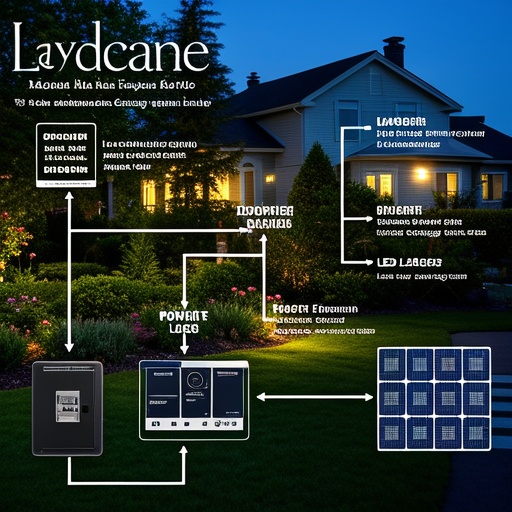Decoding LandscapeLightPowerSupply, the energy code of landscape lighting
In the realm of outdoor aesthetics, landscape lighting wields the power to transform nightscapes into mesmerizing displays of architecture, flora, and art. Yet, beneath the shimmering facade lies a critical component often overlooked – the landscape light power supply. This intricate system, the energy code of outdoor illumination, dictates not only the brilliance but also the sustainability and safety of our illuminated gardens, parks, and pathways. Let's embark on a journey to decode this vital aspect, unraveling the strategies and technologies that fuel the magic of landscape lighting.
The Essence of Landscape Light Power Supply
At its core, a landscape lighting power supply is the heart that pumps energy to various fixtures scattered across a property. Unlike indoor lighting, which typically relies on standard household wiring, outdoor installations require specialized considerations due to exposure to weather elements, varying distances, and the need for flexibility in design. The right power supply ensures consistent performance, minimizes energy consumption, and extends the lifespan of LED bulbs and other components.
Embracing Energy Efficiency with LED Technology
A pivotal shift in landscape lighting has been the adoption of Light Emitting Diodes (LEDs). These tiny wonders consume significantly less power while emitting brighter light compared to traditional incandescent or halogen bulbs. By integrating LED technology into landscape lighting schemes, we unlock a world of possibilities for energy-efficient illumination that reduces electricity bills and environmental impact. Moreover, LEDs offer longer lifespans, reducing maintenance costs and the frequency of replacements.
Harnessing Solar Power: Off-Grid Illumination
For eco-conscious homeowners and businesses, solar-powered landscape lighting presents an attractive alternative. By converting sunlight into electrical energy during the day, solar panels can independently power lights at night, eliminating the need for external power sources and further reducing carbon footprints. While initial investments may be higher, the long-term savings and environmental benefits make solar an increasingly popular choice for sustainable lighting solutions.
Smart Controls: Precision and Convenience
The advent of smart technology has revolutionized how we manage landscape lighting. Smart controllers enable users to schedule lighting scenes, adjust brightness levels remotely via smartphone apps, and even integrate with home automation systems. This level of control not only enhances security by simulating occupancy but also optimizes energy usage by ensuring lights are on only when needed. Motion sensors and photocells add another layer of intelligence, automatically activating lights in response to movement or dimming during daylight hours.
Designing for Safety and Aesthetics
Beyond functionality, the design of a landscape lighting power supply must prioritize safety. Proper grounding, waterproof enclosures, and adherence to electrical codes safeguard against accidents and equipment damage. Meanwhile, thoughtful placement of fixtures and cables preserves the visual appeal of landscapes without compromising on illumination quality. Low-voltage systems, particularly those operating at 12 or 24 volts, provide an added safety margin, especially in areas accessible to children or pets.
Navigating the Maze of Options
Choosing the right power supply involves navigating a maze of options tailored to specific project needs. Factors such as wattage requirements, voltage compatibility, and the number of fixtures determine whether a low-voltage transformer, line-voltage supply, or battery-operated system is most suitable. Understanding these nuances empowers designers and homeowners to make informed decisions that balance performance, cost-effectiveness, and ease of installation.
Future-Proofing with Scalability and Adaptability
As technology evolves, so too should our approach to landscape lighting. Opting for scalable and adaptable power supplies allows for future expansions or modifications without significant overhauls. Modular designs and compatible accessories ensure that as lighting preferences change or new advancements emerge, the infrastructure can accommodate them seamlessly.

In conclusion, decoding the landscape light power supply reveals a complex yet fascinating interplay of technology, design, and sustainability. From harnessing the efficiency of LEDs and the renewable potential of solar power to leveraging smart controls for precision and convenience, every element contributes to crafting outdoor spaces that are both enchanting and responsible. As we continue to innovate and refine these systems, the energy code of landscape lighting will undoubtedly shine brighter, illuminating our paths towards a more sustainable and visually stunning future.
 In heritage architecture prote
In heritage architecture prote
 When small-batch customization
When small-batch customization
 Have the electromagnetic emiss
Have the electromagnetic emiss
 When Triac dimmable power supp
When Triac dimmable power supp
